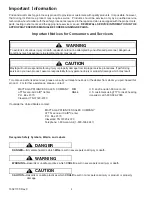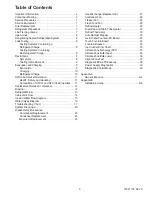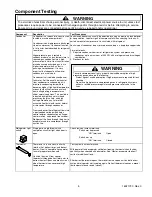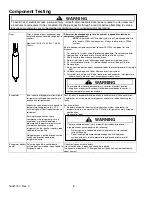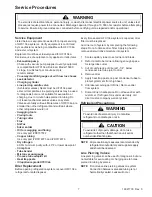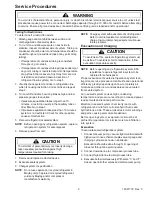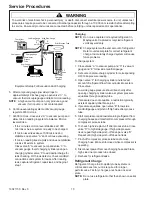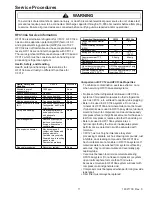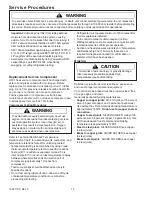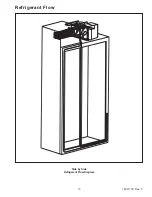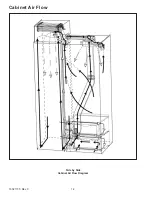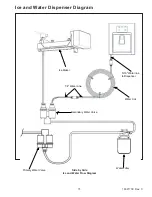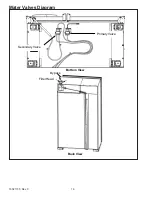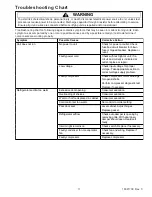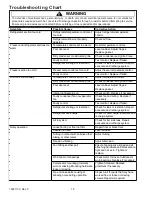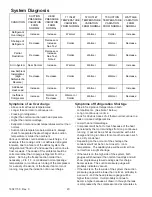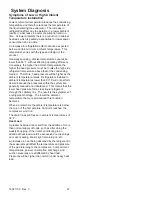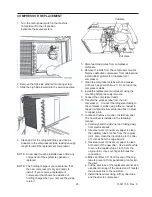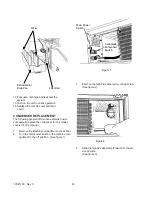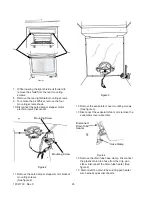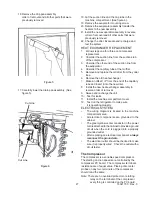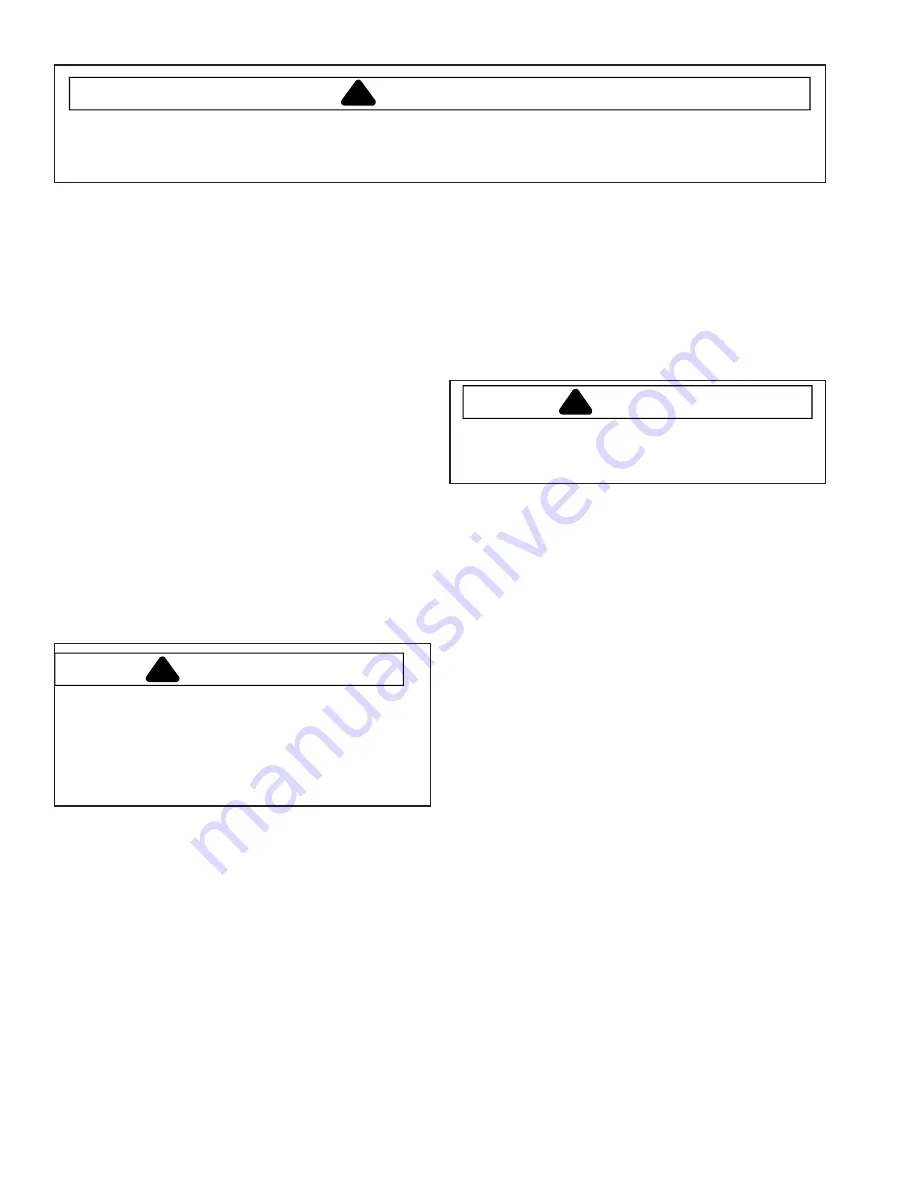
16021730 Rev. 0
12
Service Procedures
To avoid risk of electrical shock, personal injury, or death, disconnect electrical power source to unit, unless test
procedures require power to be connected. Discharge capacitor through a 10,000 ohm resistor before attempting
to service. Ensure all ground wires are connected before certifying unit as repaired and/or operational.
!
WARNING
Important:
Unbrazing drier filter from tubing will drive
moisture from desiccant and into system, causing
acids to form. Do not unbraze filter drier from tubing. If
CFC12 service drier was installed in HFC134A system,
drier could overload due to excessive moisture.
HFC134a compatible copper tubing, part #R0174075 (1/
4" O.D. X 18" length) and part #R0174076 (5/16" O.D. X
24" length) must be used when replacing tubing.
Avoid system contamination by using Towerdraw E610
evaporating oil, part # R0157532, when flaring,
swagging, or cutting refrigeration tubing.
Replacement Service Compressor
HFC134a service compressors will be charged with
ester oil and pressurized with dry nitrogen. Before
replacement compressor is installed, pull out 1 rubber
plug. A
pop
from pressure release should be heard. If a
pop
sound is not heard, do not use compressor.
Positive pressure in compressor is vital to keep
moisture out of ester oil. Do not leave compressor open
to atmosphere for more than 10 minutes.
Compressor Testing Procedures
WARNING
!
To avoid death or severe personal injury, never use
oxygen, air or acetylene for pressure testing or clean
out of refrigeration system. Use of oxygen, air, or
acetylene may result in violent explosion. Oxygen
may explode on contact with oil and acetylene will
spontaneously explode when under pressure.
Refer to Technical Data Sheet Temperature
Relationship Chart for operating watts, test points, and
temperature relationship test for unit being tested.
Temperature testing is accomplished by using 3 lead
thermocouple temperature tester in specific locations.
Test point T-1 is outlet on evaporator coil and T-2 is
inlet. Test point T-3 is suction tube temperature midway
between where armaflex ends and suction port of
compressor (approximately 12 inches from
compressor).
Thermocouple tips should be attached securely to
specified locations.
Do not test during initial
pull down
. Allow one off cycle
or balanced temperature condition to occur before
proceeding with testing.
Refrigerator must operate minimum of 20 minutes after
thermocouples are installed.
Turn control to colder to obtain required on time.
Wattage reading must be recorded in conjunction with
temperature test to confirm proper operation.
Suction and head pressures are listed on Temperature
and Relationship Chart. Normally these are not
required for diagnosis but used for confirmation on
systems which have been opened.
Brazing
CAUTION
!
To avoid risk of personal injury or property damage,
take necessary precautions against high
temperatures required for brazing.
Satisfactory results require cleanliness, experience,
and use of proper materials and equipment.
Connections to be brazed must be properly sized, free
of rough edges, and clean.
Generally accepted brazing materials are:
Copper to copper joints
: SIL-FOS
(alloy of 15 percent
silver, 80 percent copper, and 5 percent phosphorous).
Use without flux. Recommended brazing temperature is
approximately 1400°F.
Do not use for copper to steel
connection.
Copper to steel joints
: SILVER SOLDER
(alloy of 30
percent silver, 38 percent copper, 32 percent zinc).
Use
with fluoride based flux. Recommended brazing
temperature is approximately 1200°F.
Steel to steel joints
: SILVER SOLDER (see copper
to steel joints).
Brass to copper joints
: SILVER SOLDER (see copper
to steel joints).
Brass to steel joints
: SILVER SOLDER (see copper
to steel joints).


